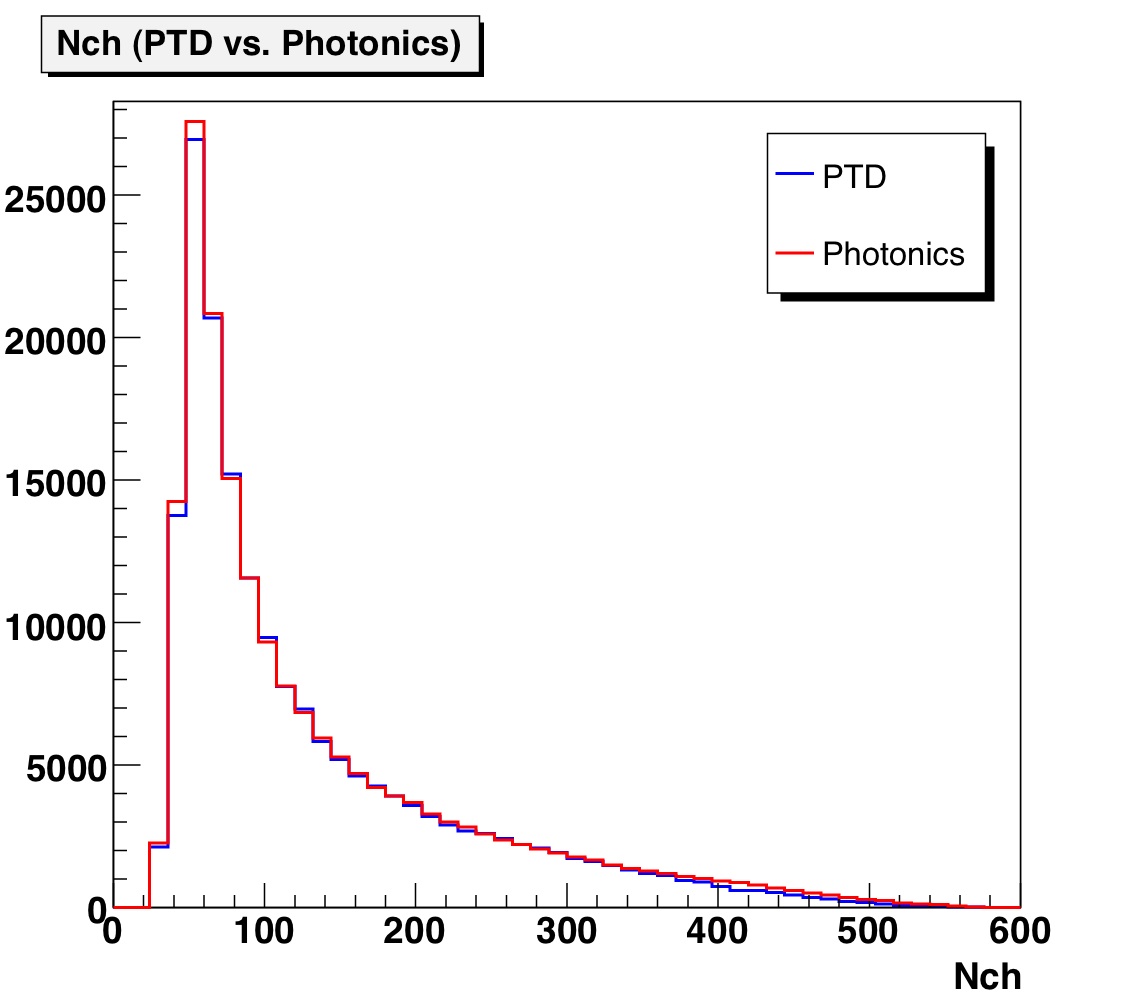
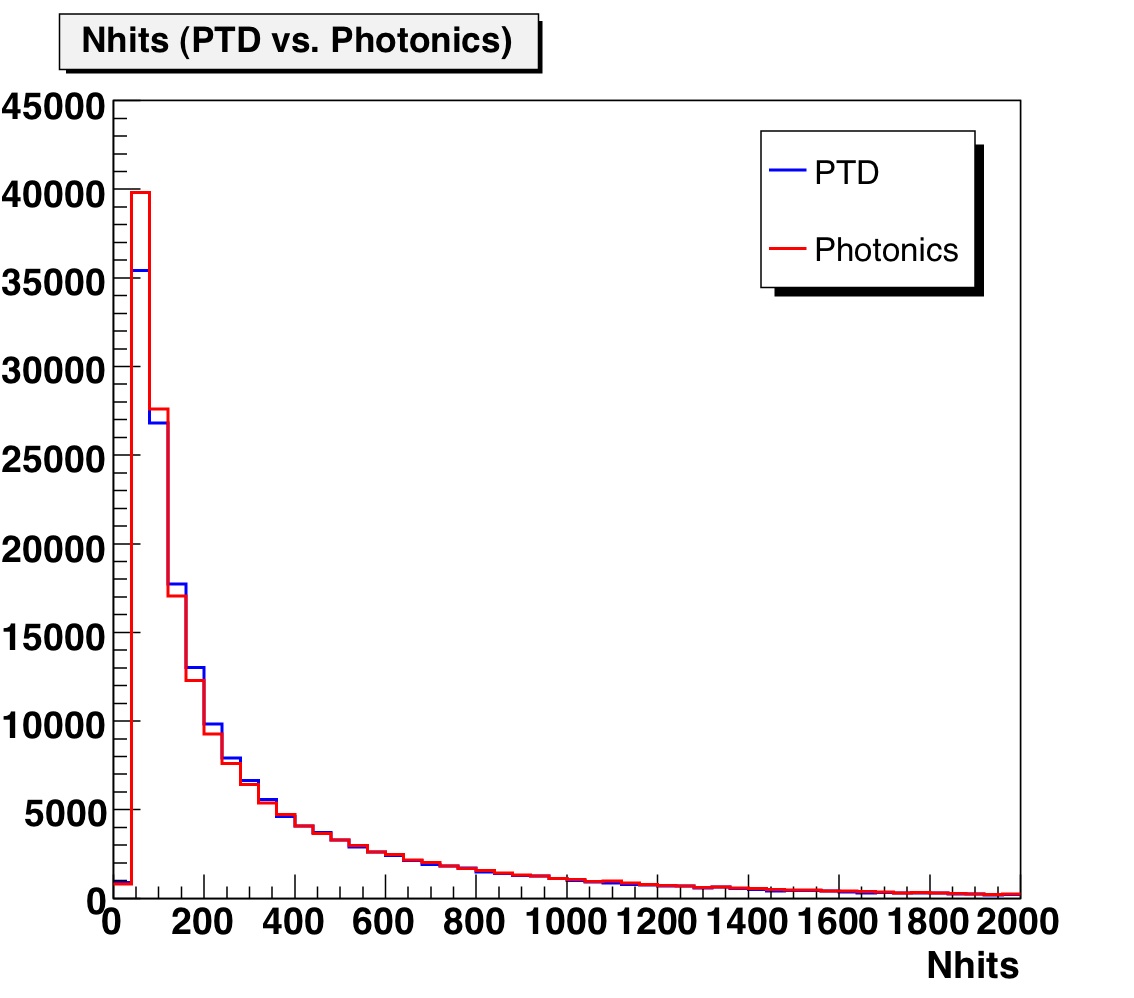
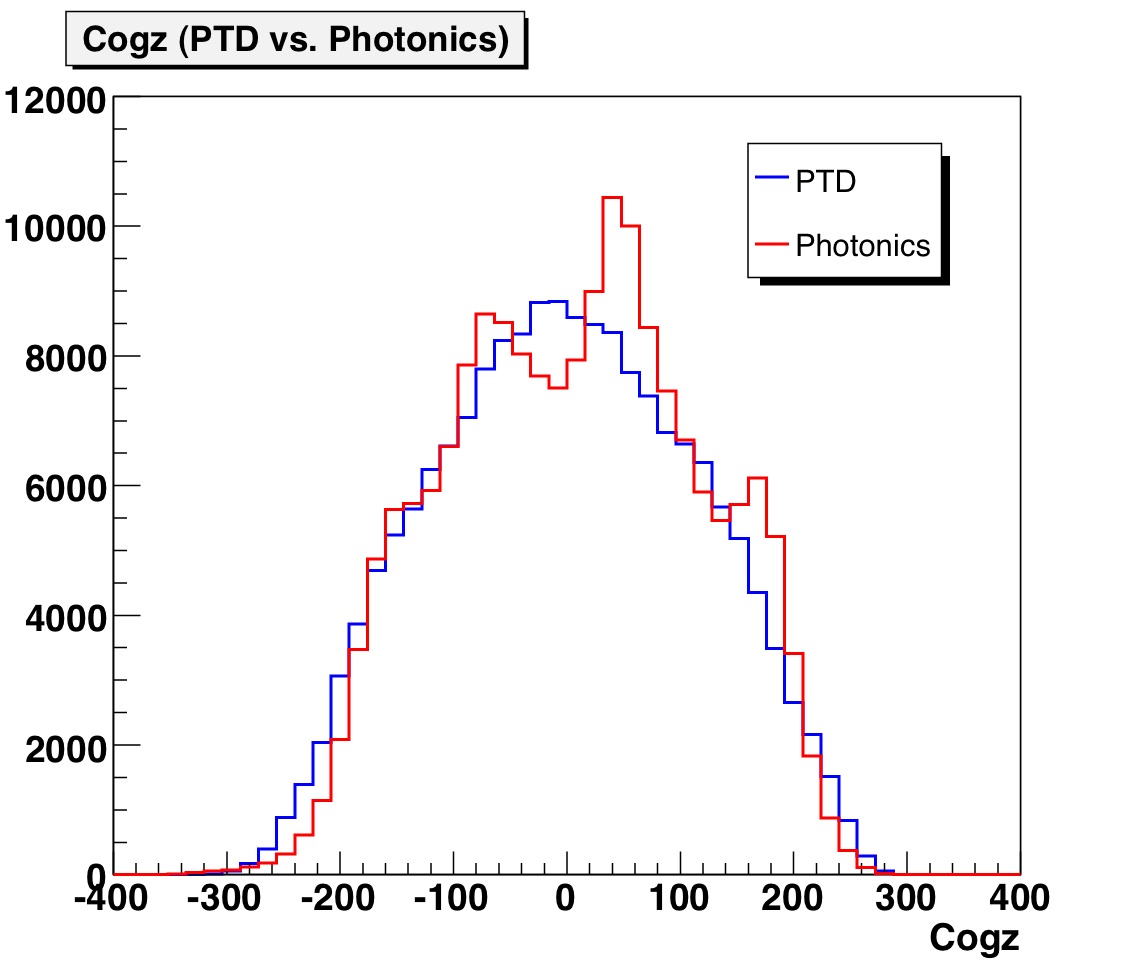
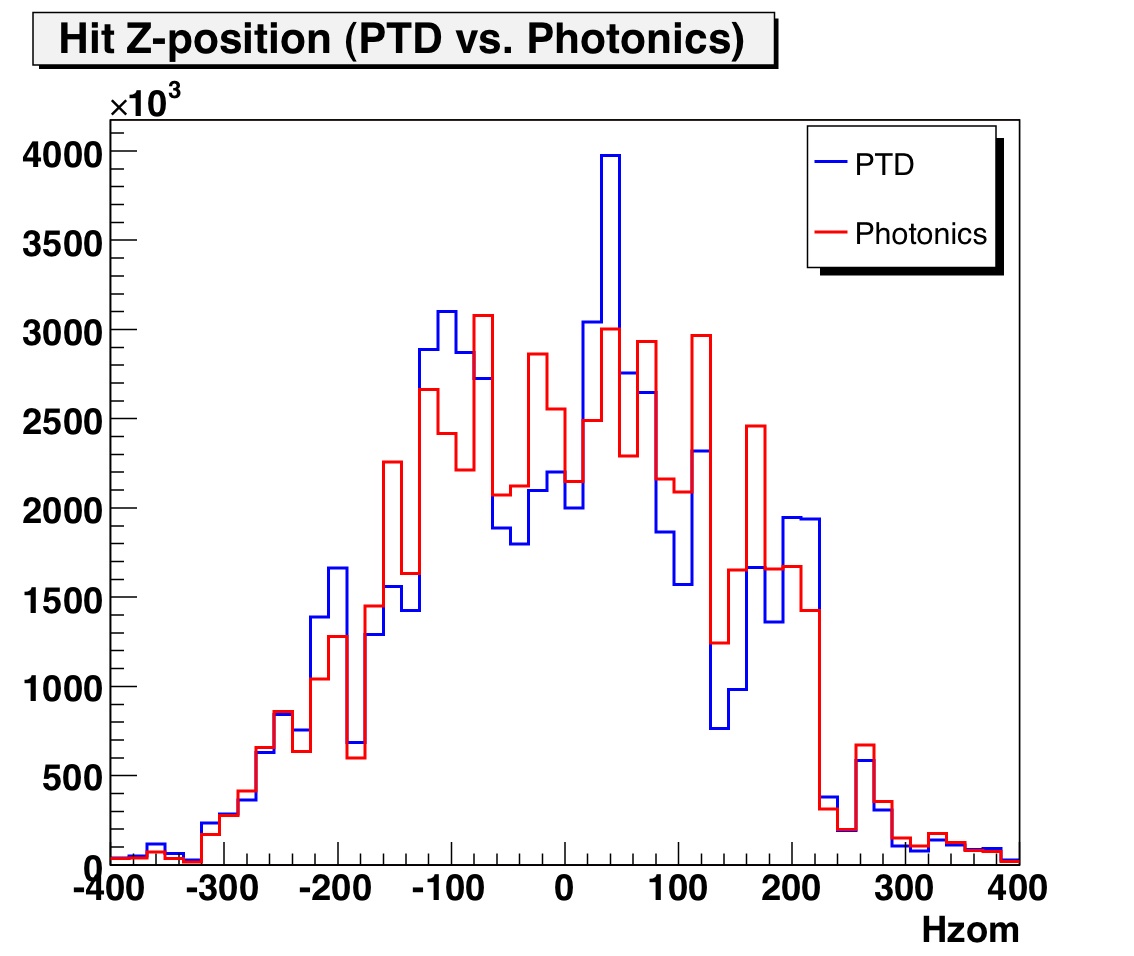
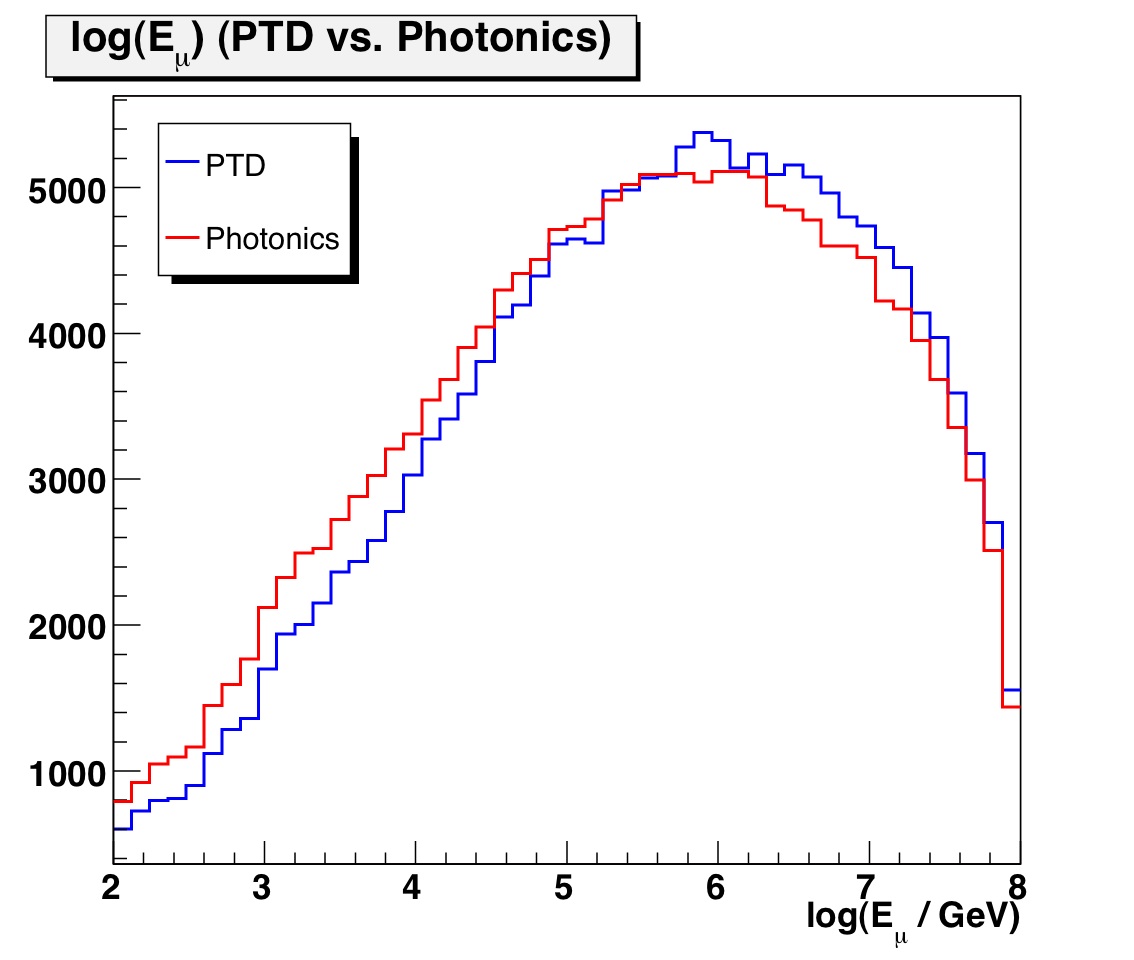
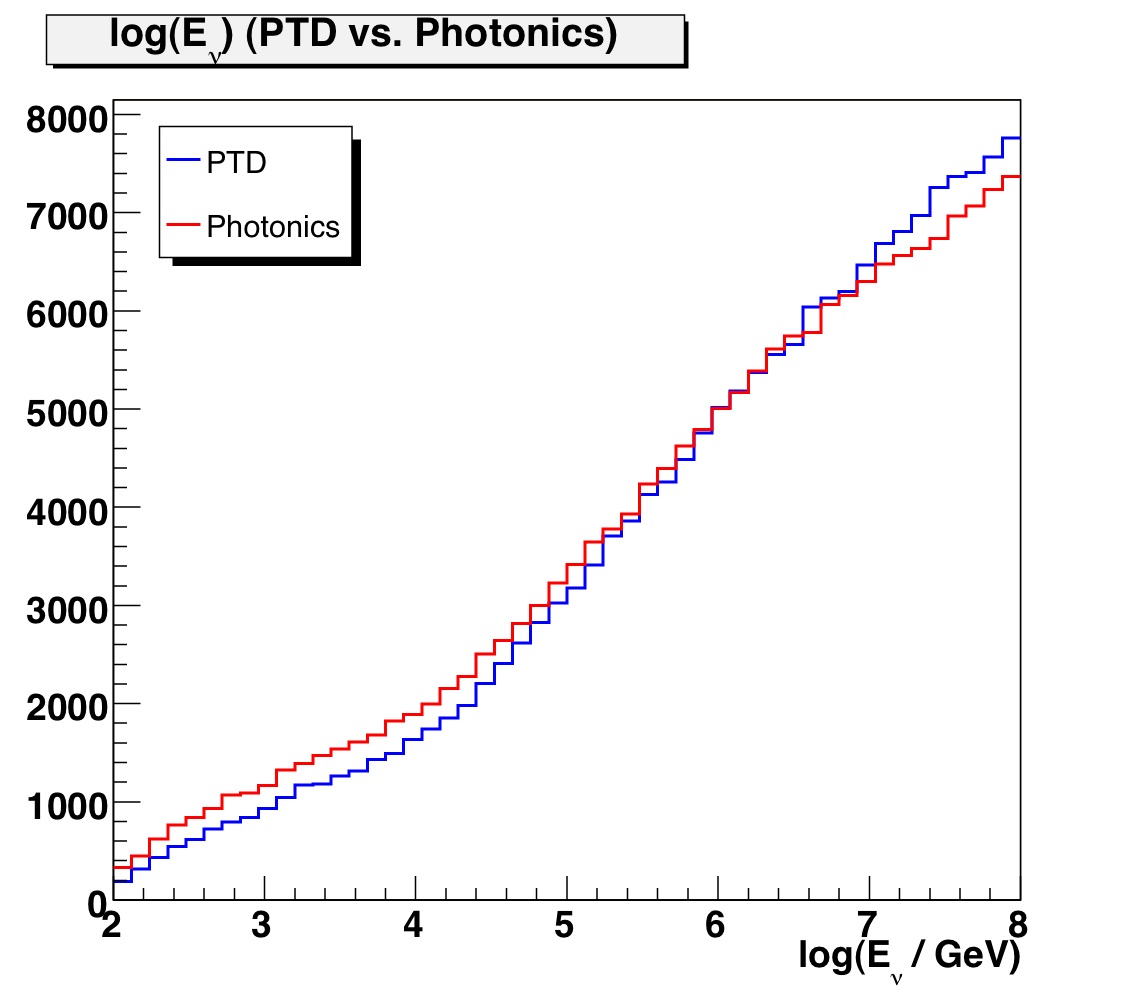
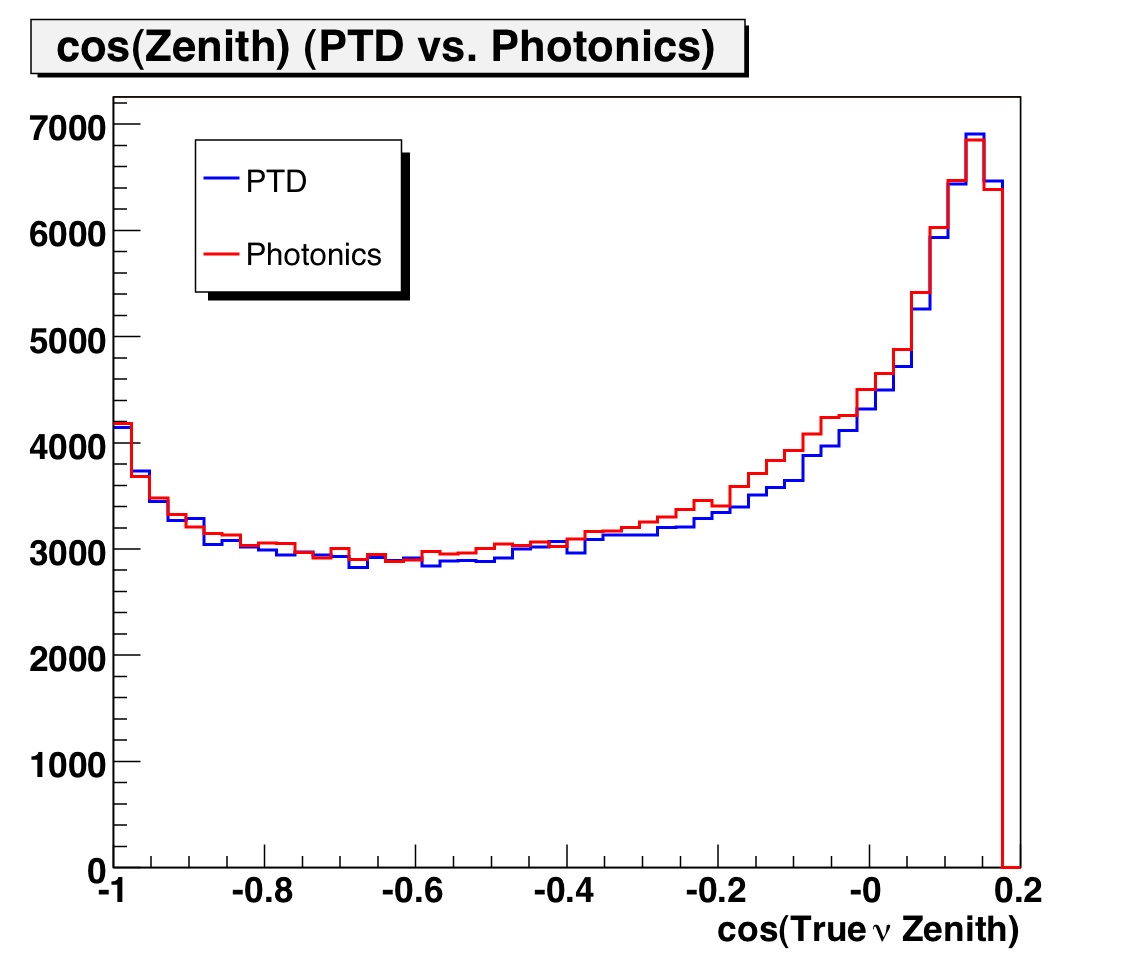
John Kelley, UW-Madison, October 2006
Production of 2005 AMANDA Monte Carlo is nearing completion, using the Photonics software package [uu.se] for photon propagation in South Pole ice. This page will archive technical details of this simulation production and will be updated as the simulation progresses.
A preliminary comparison has been performed with integral PTD (mamint)
ice, using O(100) nusim upgoing neutrino / antineutrino MC files with an E^{-1}
spectrum (no weighting: for weighted comparisons, see this
page). The number of files has been normalized in order to compare trigger
rates. The plots below are at trigger level, with no reconstructions performed.
Significant differences are visible in the COGZ structure. More subtle differences
show up in the true energy of triggered events, and in the low Nchannel and
Nhits spectrum: AMANDA+Photonics is apparently more sensitive to low-energy
events than PTD. I do not see as dramatic difference in the number of hits with
high Z as reported previously.
 |
 |
 |
 |
 |
 |
 |
Here are a few of the same plots (Nch and Nhits) in log scale:
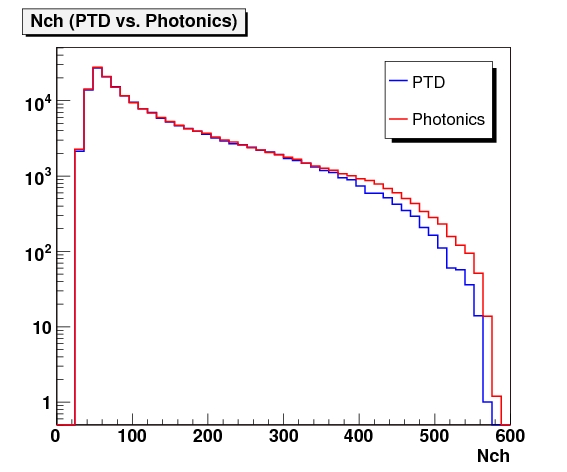 |
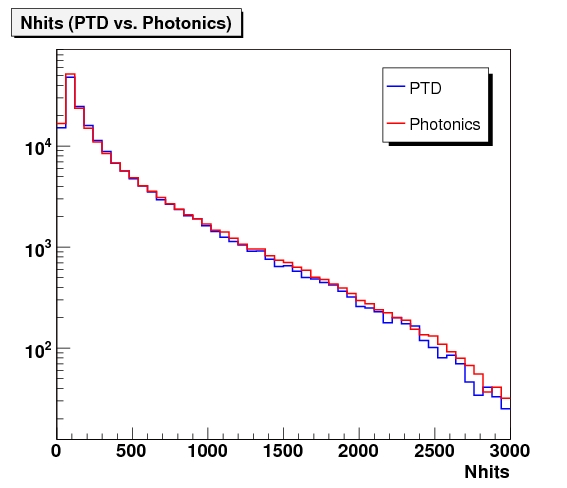 |
For ongoing comparisons of dCORSIKA and nusim with data after filtering, please see Jim Braun's page.
Paolo Desiati's simuperl package has been updated to work with Photonics. Much of the work was completed by Rafael Lang (see his web pages here [desy.de]). I have cleaned up the final few details to allow use with released versions of AMASIM and scatserver, and to optimize Photonics table loading. Details on how to install the new simuperl can be found here.
For those interested, simulation involves splitting an input F2K file into zenith angle ranges, spawning a scatserver which loads only the tables needed for that zenith angle range, iterating, and then gluing all the results back together at the end. All of this is transparent to the user.
Filtering of nusim is complete, using the 2005 filtering scheme for data (see David Boersma's web page here). Generation and filtering of dCORSIKA continues using the GLOW and NPX clusters.
Please feel free to contact me if you have any questions or comments.